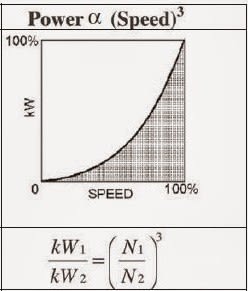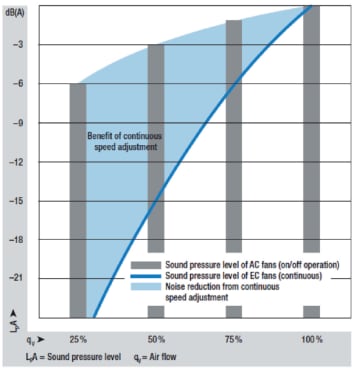4 reasons to use a fan speed controller in your application
Follow articleHow do you feel about this article? Help us to provide better content for you.
Thank you! Your feedback has been received.
There was a problem submitting your feedback, please try again later.
What do you think of this article?
With the continuous improvement in technology, every new product strives to achieve better performance than its predecessor, whilst maintaining a compact design. This is challenging the fan manufacturers in the electronics industry, as they now need to dissipate ever higher heat levels in the same space as before.
However, the desire of obtaining the highest performing option has always been in the customer’s mind, and therefore will always choose the highest performing fan he can accommodate in his enclosure.
Why use speed control then?
Typical chiller unit configuration
Flexibility
The fan selection is based on the extreme conditions the equipment might face, which means that if the fan does not have speed control it will be running at its maximum capacity 24/7. This can be detrimental, as the equipment will rarely be exposed to these extreme environments and hence the fan will be running above the duty required for most of the time.
With speed control, the fan can moderate its performance as required by the conditions making it more efficient and reducing the strain on the equipment.
Energy saving
Operating a fan further down the curve can have significant effects on its power consumption. This is clearly illustrated with the use of the fan laws.
According to the graph, a reduction of 25% in RPM will result in a saving of around 50% of the power consumption.
This is a theoretical value, and should only be used as an estimation.
However, it has been proven you can save up to 50% energy with only 22% speed reduction on many of our centrifugal blowers.
Figure 1: 3rd Fan Law
Noise
Noise is another important factor when it comes to speed control.
This is best seen when comparing an on/off operation with a speed control configuration in a multiple fan application.
According to the graph, a reduction of -15dBA can be achieved by operating all the fans at half speed, as opposed to the -3dBA reduction obtained by turning half of the fans off.
Figure 2: On/off operation vs Speed Control
Lifetime
Running the fans at their maximum operating speed will have an effect on their lifetime.
The bearing is the first component to fail in a fan under normal circumstances, and therefore the determining factor for this value.
With speed control the high temperature on the bearings are reduced, having a positive effect on the life expectancy.
There is test data showing that a 10% reduction in speed can double the lifetime of the product.
Related Articles - An intelligent way to control your cooling application – TMS




